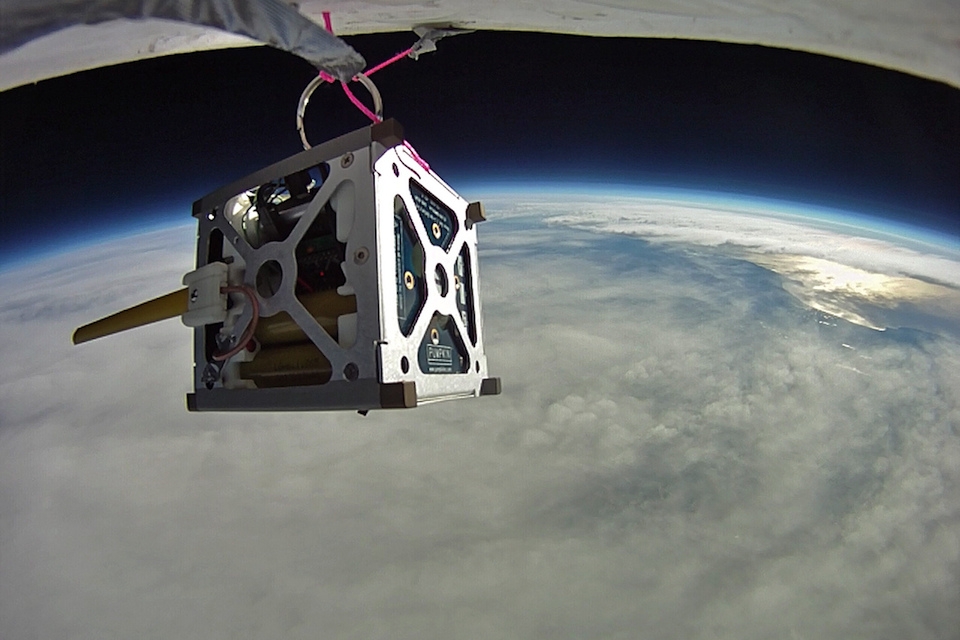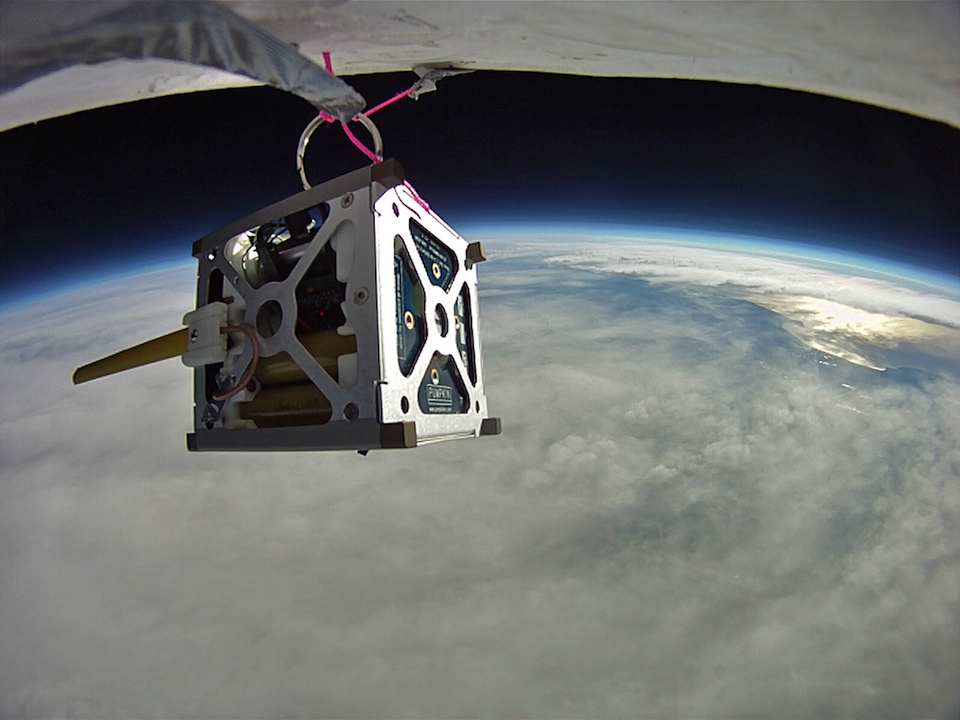By Kristen Mitchell
Technology created at the George Washington University could soon be powering the next generation of space exploration.
In December, GW and Vector, a company that connects space startups and innovations with reliable and affordable space access, reached an agreement to license plasma thruster technology created by School of Engineering and Applied Science Professor Michael Keidar and researchers in his lab.
The technology allows researchers to propel miniature satellites, only 10 centimeters long on each side, and control them while in space. The satellites are significantly less expensive than their larger counterparts and are made from common materials.
The licensing agreement will be part of a collaboration between GW and Vector. Vector will develop the inch-long thruster for commercial space use, and GW will continue to develop the next generation of the technology.
“This will be real step forward to commercialization,” Dr. Keidar said. “Our technology will be used in dedicated small rocket launches by Vector, a recognized leader in this field.”
Steven Kubisen, managing director of GW’s Technology Commercialization Office within the Office of the Vice President for Research, said Vector is leading space exploration with a solid and experienced management team.
“They have many launches committed and solid financing, despite having been formed a few months ago,” he said. “Their strong commercialization ramp will be a great platform for GW’s plasma steering thrusters on their micro and small satellites.”
In May 2015, a micropropulsion system developed at GW was launched into space. The cube-shaped satellite was created by the U.S. Naval Academy and was tracked by Naval Academy researchers over several months before it eventually decayed and burned into the atmosphere.
Smaller satellites are becoming increasingly popular for Earth-imaging and communication applications because they are inexpensive, easy to assemble and are an attractive option for researchers who want to explore space with limited resources.
Miniature spacecraft and satellites have one pitfall—they are extremely difficult to maneuver and control once in space. The plasma thruster technology helps with this problem. The thrusters use titanium as a propeller, which is converted into a gas-like plasma to provide propulsion. The plasma then accelerates and expands into a vacuum at high velocities to produce thrust. This thrust helps the craft overcome drag and maintain the small satellite’s orbit.
Professor Michael Keidar and his researchers use small model satellites to develop and test plasma thruster technology developed at GW. (Kristen Mitchell/ GW Today)
Jim Cantrell, CEO of Vector, called the propulsion technology that will be used in its two launch vehicle models revolutionary.
“Electric propulsion allows a very high degree of fuel efficiency for placing satellites into higher orbits or for maintaining satellite orbits from decaying due to atmospheric drag,” he said. “George Washington University’s technology is extremely flexible in its implementation and can be used in a variety of applications important to Vector."
Vector plans to use the technology as part of its launch system dedicated to microspacecraft. The Vector-R, the smallest satellite launch vehicle, can launch a roughly 100 –pound satellite into orbit while the larger Vector-H can launch 220 pounds.
Micropropulsion and Nanotechnology Laboratory graduate students working on this project include George Teel, Jonathan Kolbeck and Samantha Hurley.
Original development of the thruster is attributed to former Ph.D. student Dr. Taisen Zhuang. Former graduate students Dr. Joseph Lukas, Dr. Joel Slotten, Mr. Dereck Chiu worked on many aspects of this technology as well.
Images of Vector's third electric stage engine incorporating GW's plasma thruster technology which allows for energy efficient higher altitude deployment of Vector satellite payloads. (Photos: Vector)




